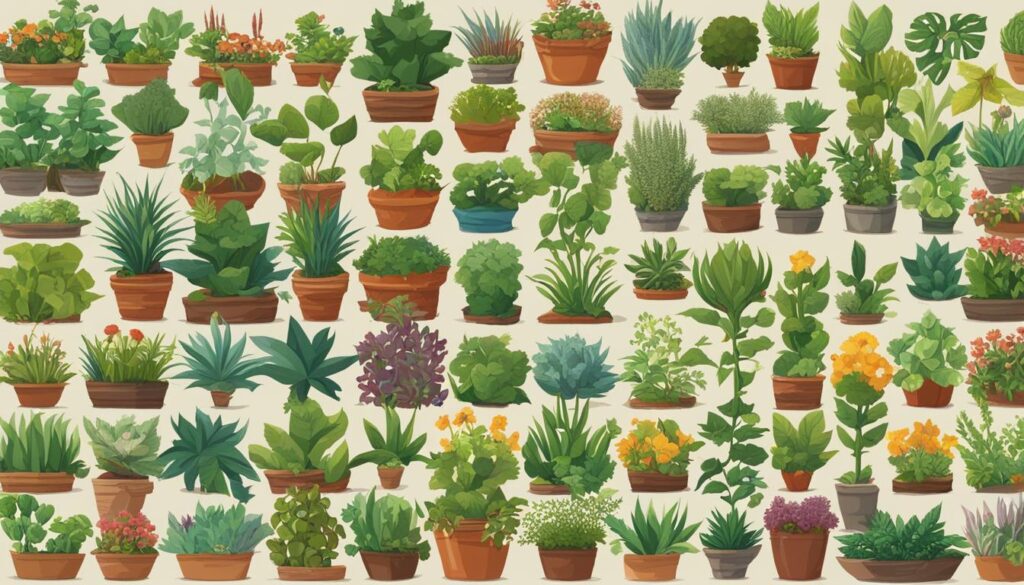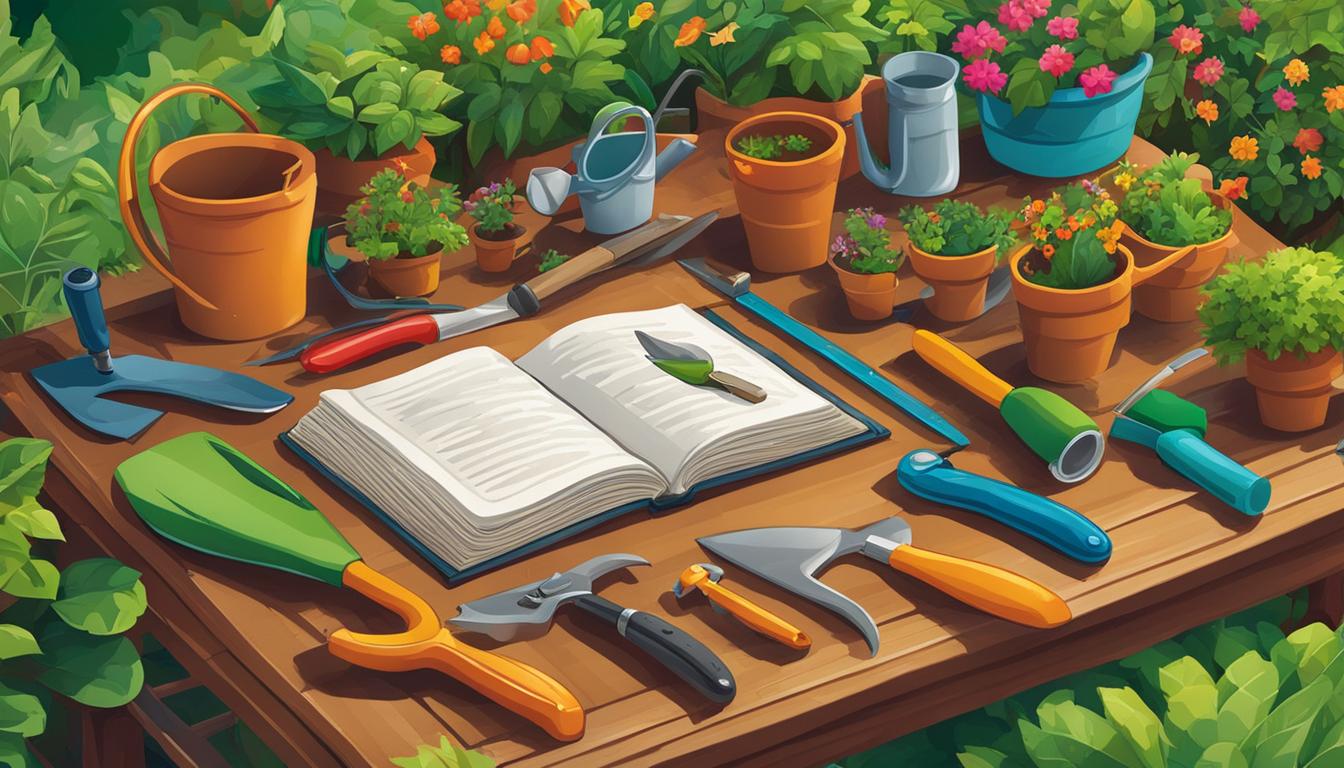Are you ready to start gardening but have no idea where to begin? Look no further than L. Patricia Kite’s KISS Guide to Gardening. This comprehensive book provides an excellent resource for both novice and experienced gardeners to learn the ins and outs of gardening.
In this article, we’ll dive into the book’s essential points, from garden planning to year-round maintenance tips. Whether you’re looking to create a beautiful flower garden or a bountiful vegetable garden, Kite’s book has got you covered.
Join us as we explore this informative guide and unlock the secrets to successful gardening.
Introduction to Gardening
Are you considering starting a garden but don’t know where to begin? Don’t fret; this section will provide you with an introduction to gardening basics, so you can get started on cultivating your green thumb and grow your own fresh produce.
A crucial aspect of gardening is choosing the right location. Pick a spot with ample sunlight, fertile soil, and good drainage.
Preparing the Soil
Preparing the soil is the next important step in starting a garden. Break up the soil, remove any rocks, and add organic matter like compost or manure. Mix the organic matter into the soil to improve its structure and nutrient content.
Choosing Appropriate Plants
Choosing plants appropriate for your region’s climate, soil conditions, and planting season is crucial for successful gardening. Select plants based on your gardening goals, whether you’re planning to grow flowers for decoration or vegetables for consumption.
Some popular garden plants include tomatoes, cucumbers, peppers, and sunflowers.
“Gardening is a great way to stay connected to nature and enjoy fresh, healthy produce.”
Follow these basic gardening tips, and you’ll be on your way to creating a vibrant and sustainable garden in no time!
Essential Tools and Equipment
Gardening is a fun and rewarding activity, but it can also be physically demanding. Having the right tools can make gardening much easier and enjoyable. Let’s take a look at the must-have tools for gardening:
| Tool | Description |
|---|---|
| Hand Trowel | A small, handheld tool with a pointed blade used for digging small holes, planting seedlings and bulbs, and removing weeds. |
| Pruners | A cutting tool used for pruning shrubs, trees, and flowers. |
| Garden Fork | A tool used for loosening soil, lifting heavy clumps of grass, and spreading compost. |
| Garden Spade | A flat, rectangular shovel used for digging holes, cutting sod, and transplanting plants. |
| Gardening Gloves | Protective gloves that shield hands from dirt, moisture, and sharp plants. |
Remember to invest in high-quality tools and equipment that can withstand regular use. It’s also essential to keep your tools clean and well-maintained to ensure longevity.
Planning and Designing Your Garden
A well-designed garden can be a serene retreat that enhances your home’s beauty and value. However, achieving an excellent garden layout requires careful planning, creativity, and a clear vision of the overall design. Your garden’s plan and design should reflect your style, preferences, outdoor needs, and interests.
The first step in designing your garden is to determine what you want from your outdoor space. Do you want to create a tranquil garden area to relax and unwind? Or do you dream of a lush garden where you can entertain outdoor guests? Whatever your vision, it’s crucial to be clear about what you want to achieve.
When planning, consider the dimensions and limitations of your outdoor space, including topography, climate, and sun exposure. Evaluate any pre-existing features, such as trees, landscaping, or outdoor fixtures, that can either complement or hinder your garden design.
There are different design techniques to create a functional and stylish garden layout, such as the formal, informal, or mixed-style. The formal gardens are characterized by symmetrical patterns, precisely trimmed hedges, and geometrically shaped flower beds. The Informal gardens, on the other hand, are asymmetrical, with curved edges, naturalistic planting arrangements, and varied colors and textures. Finally, the mixed-style often incorporates elements of both the formal and informal, creating a hybrid design that is both ordered and relaxed.
Garden Planning Tips:
- Consider the garden’s purpose and preferred activities
- Choose plants according to their growth habits, colors, and textures
- Create focal points with garden ornaments, sculptures, and water features
- Plan for garden maintenance, including watering, pruning, and fertilizing
- Ensure sufficient access paths, comfortable seating, and appropriate lighting
One effective tool for designing your garden layout is to sketch out a bird’s eye view of the space. You can also use garden designing software or online garden planner tools such as Garden Planner or Gardena to create a virtual garden layout.
In summary, planning and designing your garden is an essential part of the gardening experience. Taking the time to create a garden layout that reflects your style, preferences, and outdoor needs can lead to a successful and enjoyable garden experience.
Selecting the Right Plants
Choosing the right plants for your garden is essential for their growth and overall health. Consider the following when selecting plants:
Local Climate
Plants that thrive in your local climate require less care and are more likely to flourish. Research your region’s climate zone to determine which plants will work best for your garden. (plant selection, best plants for specific conditions)
Soil Conditions
Ensure the plants you select are compatible with your garden’s soil type, pH, and drainage. Conduct a soil test to determine the pH level, then choose plants that suit your soil conditions. (plant selection, best plants for specific conditions)
Aesthetic Appeal
Choose plants that complement the overall look, feel, and color scheme of your garden. Consider the height, width, and texture of the plants to create a harmonious and balanced design. (choosing plants for your garden)
Check with your local nursery or garden center for advice on the best plants for your area. Do your research, and don’t be afraid to experiment with different plant combinations to create a unique and beautiful garden. (plant selection)

Planting and Caring for Your Garden
Once you have selected your plants, it’s time to get them into the ground and care for them properly. Proper planting techniques can make a significant difference in the health and growth of your plants. Here are some planting tips to keep in mind:
- Read the planting instructions on the seed packet or plant tag carefully and follow them closely. Different plants have different requirements for the depth and spacing of the planting holes.
- Loosen the soil in the planting area with a garden fork or tiller to allow roots to penetrate and absorb nutrients easily.
- Add organic matter to the soil, such as compost or aged manure, to improve the soil’s quality and texture.
- Water the plants thoroughly before planting and continue to water regularly until they establish themselves in their new environment.
- Apply a layer of mulch around the base of the plants to help retain moisture, suppress weeds, and regulate soil temperature.
Good garden care involves regular maintenance activities that ensure your plants remain healthy and attractive to the eye. These activities include:
- Watering your plants regularly and consistently, paying attention to your plant’s individual water requirements.
- Fertilizing your plants every few weeks to promote healthy growth and performance. Use organic fertilizers or slow-release fertilizers for best results.
- Pruning your plants to remove any decayed or damaged branches, maintain their desired shape or size, and stimulate new growth.
- Regularly checking your plants for pests and diseases and taking appropriate measures to control them promptly.
Effective plant maintenance also depends on your soil’s quality and nutrition. Use the following tips to improve soil health:
- Test the soil regularly to determine its pH level and nutrient content.
- Apply the appropriate soil amendments, such as lime to adjust the pH and sulfur to lower it, to maintain the optimal pH level for healthy plant growth.
- Add organic matter, such as compost, manure, or grass clippings, to provide additional nutrients and improve soil structure.
Keeping your garden healthy and thriving requires attention to detail and consistent effort. But the rewards are well worth it when you see the beauty and productivity of your cherished garden. Check out the following table for a summary of key planting and maintenance tips:
| Task | Timing | Tools and Materials |
|---|---|---|
| Planting | Spring or fall, depending on the plant and climate | Garden fork, tiller, compost, aged manure, mulch |
| Watering | Regularly, depending on the plant’s individual water needs | Watering can, hose, sprinkler |
| Fertilizing | Every few weeks during the growing season | Organic or slow-release fertilizer |
| Pruning | Throughout the year, depending on the plant type and growth habit | Hand pruners, loppers, pruning saw |
| Pest and Disease Control | As needed throughout the year | Insecticides, fungicides, soap sprays, neem oil, etc. |
Dealing with Common Garden Problems
Even the most experienced gardeners encounter problems in their gardens, such as pests, plant diseases, and nutrient deficiencies. However, with the right knowledge and problem-solving skills, you can keep your plants healthy and thriving. In this section, we’ll discuss some common issues you may encounter in your garden and provide practical solutions for addressing them effectively.
Garden Pests
Garden pests such as aphids, mites, and snails can cause damage to your plants and diminish their growth. To prevent pest infestation, maintain a clean and healthy garden environment. Remove any decaying or dead plant matter, and avoid overcrowding of plants. Use natural methods such as handpicking or introducing beneficial insects like ladybugs. In severe cases, use a natural pest control solution or seek professional help.
Plant Diseases
Plant diseases such as powdery mildew, blight, and leaf spot can also damage your garden. Ensure that you are starting with healthy plants and soil. Water your plants properly and avoid moisture buildup. Use a fungicide or other natural remedies to combat disease, or remove infected plants altogether to avoid spreading the disease.
Problem-Solving in Gardening
Some other common issues in gardening include nutrient deficiencies, poor soil quality, and environmental factors, such as extreme temperatures. Always start with proper soil preparation and plant selection to avoid these issues. To solve problems, identify the root cause and apply appropriate solutions, such as fertilization, pH adjustment, or shade cloths. Regularly monitor your garden and make changes as needed.
“A healthy garden requires vigilance and proactive measures to address common issues and maintain plant health.” – L. Patricia Kite
Seasonal Maintenance and Year-Round Tips
Proper care and maintenance are key to keep your garden healthy and beautiful year-round. In this section, we’ll provide you with some valuable tips and tricks for seasonal gardening and year-round garden care.
Spring
Spring is the time for rejuvenation and regrowth in your garden, with warmer temperatures and longer days providing the perfect conditions for your plants to thrive. Here are some tips for spring maintenance:
- Prune dead branches and clear away debris from winter storms.
- Prepare the soil by adding organic matter, like compost or well-rotted manure.
- Apply a layer of mulch to suppress weeds and retain moisture.
- Plant cool-season crops like peas, lettuce, and spinach.
Summer
Summer is the time for blooming flowers, ripe vegetables, and pest control. Here are some tips to keep your garden gorgeous through the hot months:
- Water deeply and regularly, especially during heatwaves or droughts.
- Fertilize your plants to replenish nutrients lost in the soil.
- Pinch back flowers to encourage bushier growth and more blooms.
- Remove weeds and dead foliage regularly.
Fall
In the fall, your garden starts to wind down, and it’s time for preparation for winter. Here are a few maintenance tips for this time of year:
- Clean up fallen leaves and debris from your garden beds.
- Plant bulbs for spring blooms.
- Remove annual plants and add them to your compost pile.
- Protect tender plants from the first frost by covering them with burlap or frost cloth.
Winter
Winter is the season of rest for most gardeners, but there’s still work to be done to keep your garden healthy and ready for spring. Here are some tips for year-round garden care:
- Mulch your garden beds to protect plants from frost and retain moisture.
- Water your plants sparingly, especially during cold and dry spells.
- Prune dormant trees and shrubs to promote healthy growth in the spring.
- Clean and oil your garden tools to prevent rust and damage.
Following these tips will keep your garden thriving all year long. Happy gardening!
Conclusion
Investing in Kite’s KISS Guide to Gardening is a wise decision for anyone interested in creating a thriving garden. The book’s comprehensive coverage of gardening basics, essential tools, garden planning, plant selection, and maintenance is invaluable for both beginners and seasoned gardeners alike.
By following the tips and techniques outlined in the book, you’ll be able to create a beautiful and functional garden that complements your home’s aesthetic appeal. Whether you’re planting vegetables, flowers, or a combination of both, Kite’s book offers practical advice and guidance to help you achieve your desired outcomes.
With seasonal gardening tips and year-round care strategies, you can take the guesswork out of garden maintenance and keep your plants healthy and looking their best throughout the year. Whether you’re dealing with common garden problems or looking for ways to enhance your garden’s beauty, Kite’s KISS Guide to Gardening is the perfect resource to turn to.
Invest in your gardening knowledge today by purchasing L. Patricia Kite’s KISS Guide to Gardening, and soon, you’ll be enjoying the beauty and rewards of a thriving garden right in your backyard.



